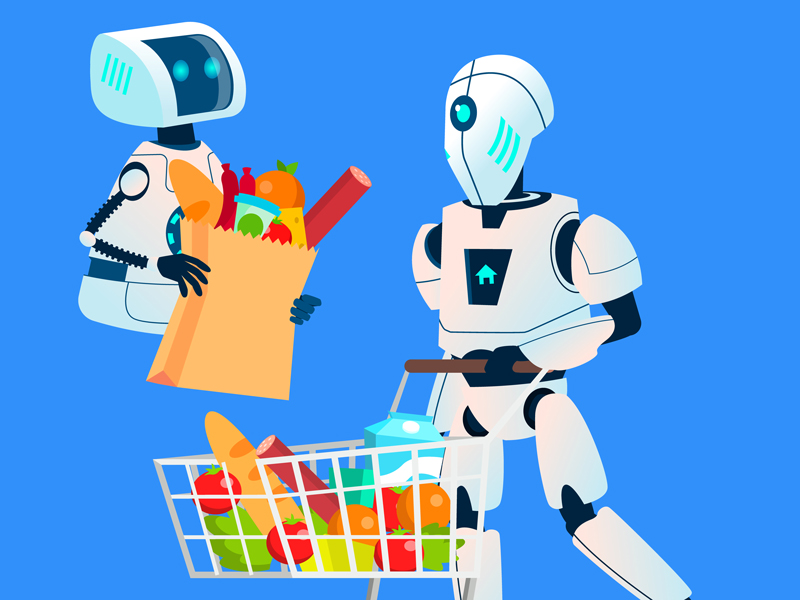Future-proofing convenience: how retailers can thrive in the on-demand economy
Delivering state-of-the-art retail services is fraught with difficulties, but innovations in AI could be the answer

In the on-demand economy, insights-based decision-making – accomplished by leveraging data analytics to improve business planning – could help companies anticipate market shifts more accurately
The retail landscape is undergoing a seismic shift, driven by rapidly changing customer expectations. The consumers of today are only a few taps away from an assortment of on-demand products and services, and they expect their purchases to be adaptable to their needs – with fast delivery.
These expectations are forcing retailers to change how they operate and become more agile. To stay competitive, retailers must deliver an improved experience. However, innovating has its risks: without the right strategy, a retailer’s investment in new technology will not result in a profitable return. To help drive real value from their investments, retailers must consider a number of actions, including the use of artificial intelligence (AI), developing and utilising insights-based decision-making and addressing last-mile delivery challenges.
Deploying AI
Capgemini’s report, Building the Retail Superstar: How unleashing AI across functions offers a multibillion-dollar opportunity, found that 89 percent of retailers are hoping to deploy highly complex AI to provide great benefits. This overly ambitious approach can cause problems without the right level of data maturity within the organisation. Projects of this nature can be difficult to scale up to wider use, are likely to fail and can result in wasted time and investment.
On the other hand, less complex use cases have a better chance of reaching full-scale deployment, while also allowing an organisation to develop its data capabilities to pave the way for more complex use cases in the future. Examples of less complex use cases that provide quick returns include deploying online carts and chatbots – powered by machine learning – to provide personalised recommendations for customers shopping online.
Insights-based decisioning
While many retailers are capable of tracking fluctuations in customer purchasing, they are often unable to pinpoint which variables influence these changes and, more critically, when such shifts may occur in the future. By considering a more robust set of data inputs and leveraging AI technology to analyse these disparate sources, it is possible for organisations to generate truly actionable insights about the market, customer behaviour or their own business operations.
In the on-demand economy, insights-based decision-making – accomplished by leveraging data analytics to improve business planning – holds great promise for anticipating market shifts more accurately, better understanding business dynamics, predicting customer behaviour and managing risk. This process helps organisations reap the rewards of a fast-paced and uncertain environment, while carrying relatively little risk. By mining data, leveraging cutting-edge analytics and partnering with a proven leader in this field, it is possible for retailers to identify the opportunities that will deliver the most value to their business.
While many retailers are capable of tracking fluctuations in customer purchasing, they are often unable to pinpoint which variables influence these changes
Last-mile delivery challenges
Additional research by Capgemini found that the 97 percent of retailers feel they would not be able to sustain free shipping unless they see a reduction in delivery costs through automation. The same report found that 43 percent of supply chain executives believe there is a lack of efficiency in online order fulfilment; parcelling and delivery are the major hurdles to implementing last-mile delivery solutions.
For retailers with significant store footprints and high delivery volumes, automation is a critical requirement to bringing down costs. With warehouses and sorting representing one-third of supply-chain costs, there is a significant opportunity to reduce costs through automation – for example, it can reduce fulfilment errors. When items are left out of an order by mistake, multiple packages have to be sent out to remedy the error, increasing costs and decreasing customer satisfaction. Returns can also be processed using the same automated systems. An example of truly effective automation is the automated warehouse at Ocado, a UK-based online supermarket: this service can fulfil a 50-item delivery in five minutes, when it would take two hours on average without automation.
Parcel lockers and pick-up and drop-off points are another efficient way to reduce last-mile delivery costs, as multiple deliveries can be completed at a single location. Amazon is a pioneer in this space, having launched its locker facilities at Whole Foods Markets and other convenience stores in the US. Features like these are very convenient for consumers, as they do not need to be present to receive the delivery, and also benefit retailers as they have a wider timeframe to complete the delivery.
Ultimately, in today’s volatile retail climate, strategic use of technology is critical for retailers to keep up with the demands of the modern consumer. By moving to an insights-based decision-making model, utilising AI to boost efficiency and avoiding losses on last-mile deliveries, retailers can deliver added value that improves the customer experience and produces strong returns.













